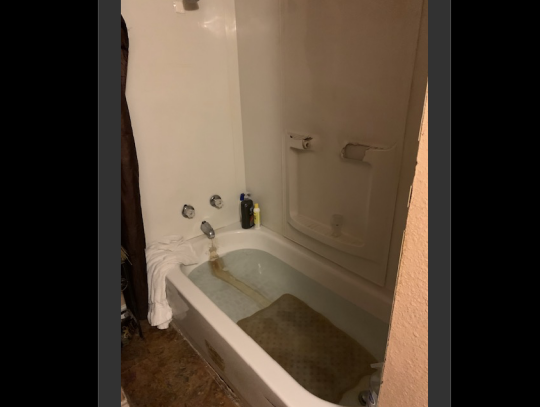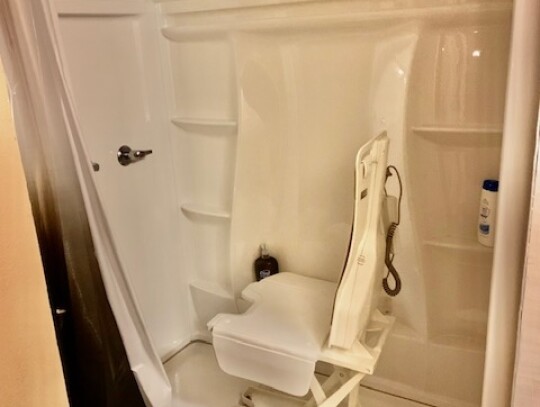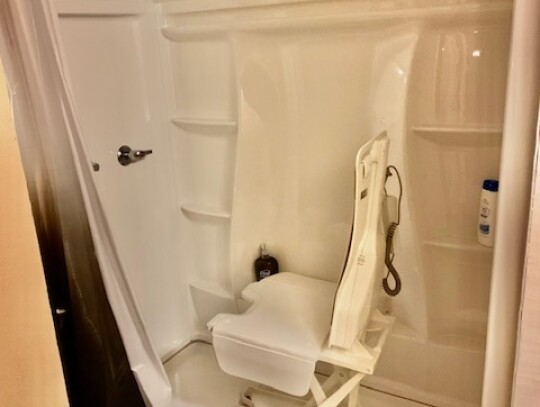Since 1976, the Habitat for Humanity organization has made it their mission to provide homes to those who do not have the resources to purchase one themselves. Their mission is extending to those who already own homes as earlier this year, Habitat for Humanity introduced their Critical Repairs Program to return damaged homes back to working condition.
Director Kenneth Wicks and board member Charmaine Katz have been on Habitat construction sites all over Colorado County. From Columbus, Eagle Lake and Weimar to the county areas outside city limits, the local Habitat for Humanity branch has made an impact on the area. H4H has built 29 homes since their origin in 1996 with a 30th home planned for October.
But while getting lower-income people into new homes is still their original mission, the brain trust behind the local Habitat for Humanity branch realized that they could spread their ministry to those that already own homes in the area.
Many of the houses in Colorado County have been in the community for well over 50 years with varying levels of maintenance needed. The Habitat for Humanity board noticed that there are people in need who already have a place of residence but cannot necessarily afford to do the necessary work in their home to have ideal living conditions.
“There is a need in the community and the county where people are in need of repairs,” Wicks said, “They don’t have the resources to.”
Enter the Critical Repairs Program, an initiative intended to assist more people in need in between their home-building efforts. Homeowners send in an application with a few criteria that they must have before being considered for the repair program. They must live in the residence for at least a year, not be a renter and make less than 35%-85% of the median wage in their area. For any homeowner that qualifies, they can submit an application to Habitat either through mail, email or in person for further consideration.
If Habitat determines the level of need with a house visit, they reach out to their network of contractors who specialize in home repair; a network they are constantly trying to expand with more contractors and home-repair businesses.
One family has already benefitted from the CRP as Roslyn Edwards and her two grandsons Mylik and Jashon have been assisted with home repairs that had an immediate impact on their living conditions. Edwards had been caring for Mylik who has Muscular Dystrophy and requires a wheelchair to move around. Habitat went on to repair the ramp that leads into the home that had been aged over time, and they also converted the bath into a walk-in shower to make it easier for Edwards’ grandson to bathe.
“I was very excited and happy that they did a good job,” Edwards said, “I would recommend them to anybody. Very helpful and respectful.”
The CRP helps Habitat for Humanity spread their mission two-fold. First, they can help more people in need, not just those who have difficulties purchasing a home. Second, home repairs are much more affordable than building a home from scratch, meaning Habitat for Humanity can spread some of its resources in more areas and reach more people.
Habitat for Humanity acquires its resources in three main ways: mortgages, donations and grants.
The people who have assisted with a new home contribute to Habitat physically, providing sweat-equity during the construction of the house. But the new resident also contributes back monetarily as they take on an interest-free mortgage, paying back the cost of construction over time.
Donations are a big part of Habitat’s funding, with several fundraisers throughout the year focused on helping them create more opportunities to help others. They also receive donations throughout the year whether monetarily, or even in volunteer work. Both provide tax-incentives for business as well, and several local businesses do take advantage by providing charitable contributions of either their time or funding.
As a non-profit, philanthropic organization, they also qualify for grants and programs that are intended to help organizations like Habitat with funding to expand their capabilities.
While having several different sources of income is an effective way for Habitat to keep funding in their treasury, they do not receive nearly enough funding to assist everyone who sends an application which is their goal down the line.
“There’s no question who needs the help,” Charmaine Katz said, “Our goal is to not say no to anyone who comes to us for help when it comes to repairs.”
Until they can effectively help each person that requires assistance, they will continue asking for three main elements of community participation. Donations, volunteer hours and new local contractors are things that will help Habitat continue their mission moving forward.
.jpg)





